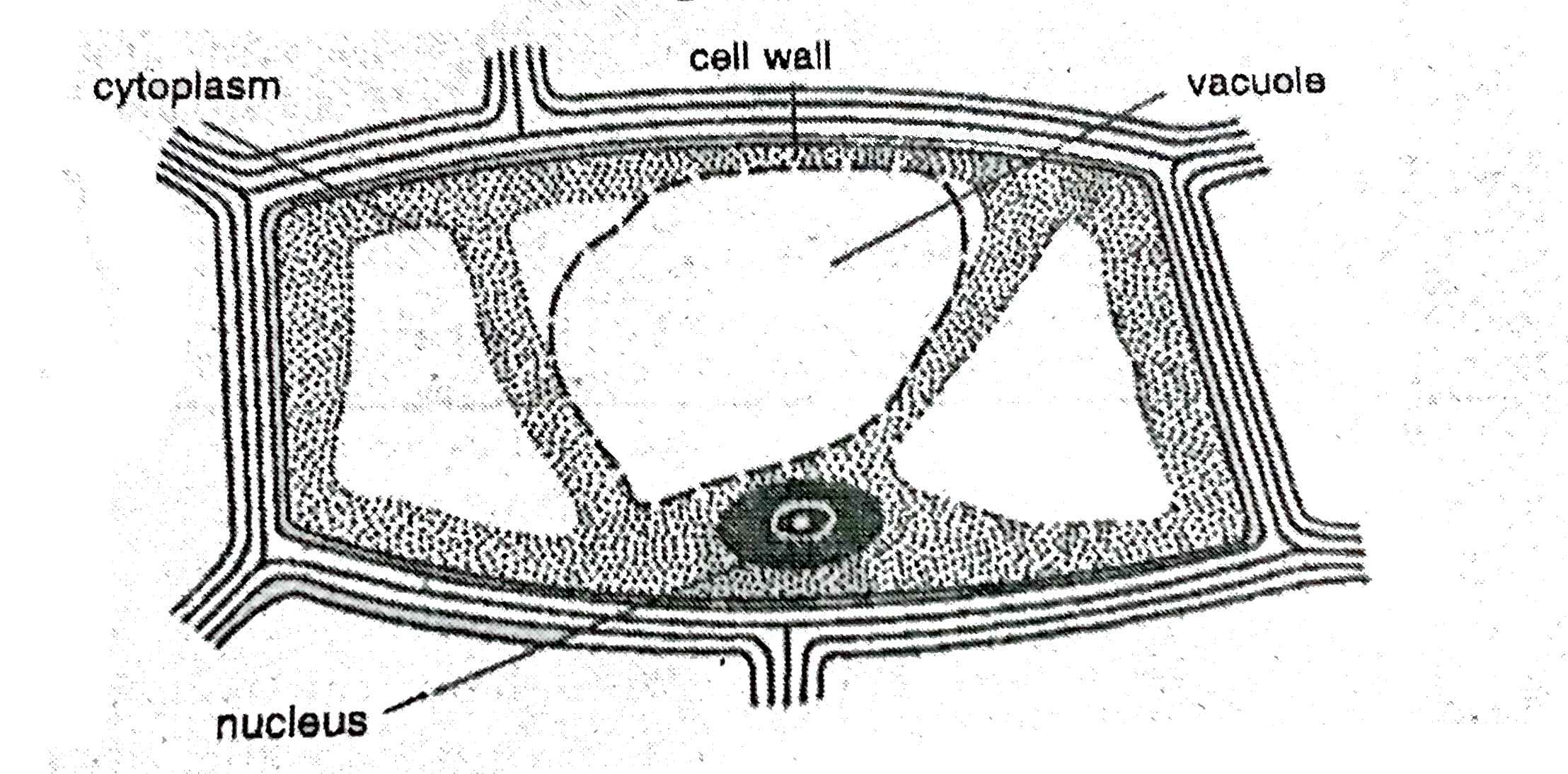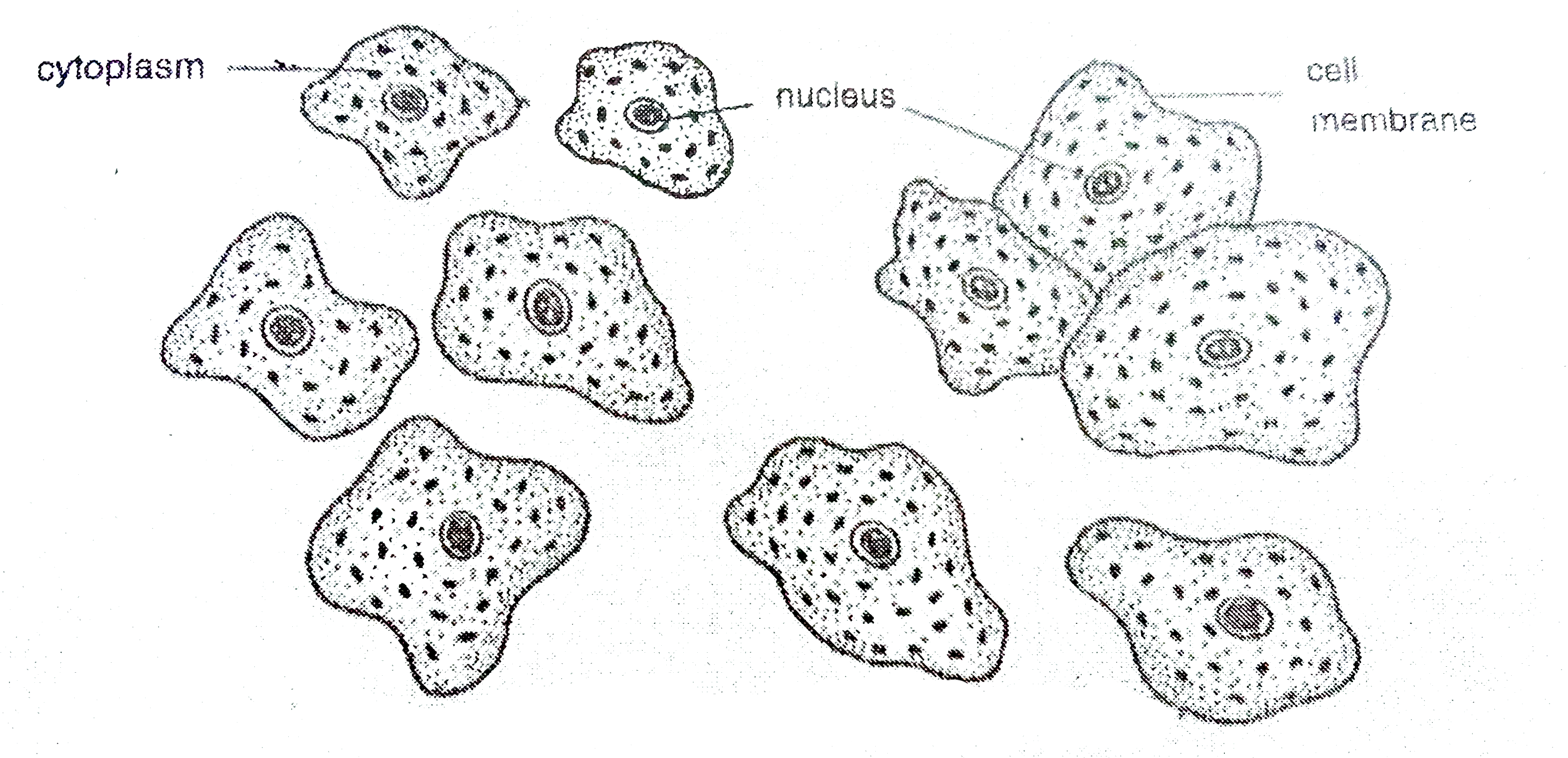If cells of onion peel and RBC are separately kept in hypotonic solution, what among the following will take place? Explain the reason for your.
(a) Both the cells will swell.
(b) RBC will burst easily while cells of onion peel will resist the bursting to some extent.
(c) Both (a) and (b) are correct.
(d) RBC and onion peel cells will behave similarly.
(b) When R.B.Cs and cells of onion peel are separately kept in hypotonic solution. R.B.Cs will swell up and then burst due to endosmosis. However, cell wall in cells of onion peel puts a counter wall pressure when the cells become fully turgid. This stops further entry of water in the cells of onion peel and, thus, they do not burst.
Topper's Solved these Questions
- BOOK - PRADEEPCHAPTER - THE FUNDAMENTAL UNIT OF LIFE EXERCISE - LONG ANSWER QUESTION7videos
THE FUNDAMENTAL UNIT OF LIFE
- BOOK - PRADEEPCHAPTER - THE FUNDAMENTAL UNIT OF LIFE EXERCISE - A. VERY SHORT ANSWER QUESTIONS67videos
THE FUNDAMENTAL UNIT OF LIFE
- BOOK - PRADEEPCHAPTER - THE FUNDAMENTAL UNIT OF LIFE EXERCISE - MCQ29videos
THE FUNDAMENTAL UNIT OF LIFE
- BOOK - PRADEEPCHAPTER - NATURAL RESOURCES : OUR ENVIRONMENTEXERCISE - QUESTIONS WITH ANSWERS20videos
NATURAL RESOURCES : OUR ENVIRONMENT
- BOOK - PRADEEPCHAPTER - TISSUESEXERCISE - Analytical Questions with Answers10videos
TISSUES
Similar Questions
If cells of onion peel and RBC are separately kept in hypotonic solution, what among the following will take place? Explain the reason for your answer.
RBC and onion peel cell will shrink and plasmolyse.View SolutionIf cells of onion peel and RBC are separately kept in hypotonic solution, what among the following will take place? Explain the reason for your answer.
RBC will burst easily while cells of onion peel cells will resist the bursting.View Solution
Knowledge Check
- Question 1 - Select One
What will be the result if the cells of onion peel and RBC are kept in hypotonic solution seperately ?
AThe cells of onion peel will shrink while RBC will sweel.BBoth the cells will shrink.CRBC will burst after swelling easily while cells of onion peel will resist the bursting .DBoth the cells will plasmolyze. - Question 2 - Select One
A RBC and a plant cell (with thick cell wall) are placed in distilled water. The solute concentration is the same in both the cells. What changes would be observed in them
ABoth plant cell and RBC would not undergo any changeBThe RBC would increase is size and burst while the plant cell would remain about the same sizeCThe plant cell would increase in size and burst while the RBC would remain about the same sizeDBoth plant cell and RBC would decrease in size and collapse - Question 3 - Select One
Which of the following are correct for the cell which has naked ds circular DNA?
(a) Both 70S and 80S ribosome
(b) Histone absent
( c ) Compartmentalisation of cytoplasm absent
(d) Always diploidAa and dBb and cCa and cDb and d
If cells of onion peel and RBC are separately kept in hypotonic solution, what among the following will take place? Explain the reason for your answer.
RBC and onion peel cell will shrink and plasmolyse.View Solution(a) Why does the plant cell, placed in a hypotonic solution, not burst ?
(b) What happens when a fully turgid plant cell is placed in a hypertonic solution ? Name the phenomenon.View SolutionIdentify the odd one among the following and justify that.
Polythene, Egg membrane, Cell membrane, Onion peelView SolutionDraw a plant cell and label the parts which
(a) determines the function and development of the cell. (b) packages materials coming from the endoplasmic reticulum.
(c) provides resistance to microbes to withstand hypotonic external media without bursting.
(d) is site for any biochemical reaction necessary to sustain life.
(e) is a fluid contained inside the nucleus.View SolutionTo prepare stained temporary mounts of (a) onion peel, and (b) human cheek cells and to record observations and draw their labelled diagram.


In plant cells, cell wall isView Solution

